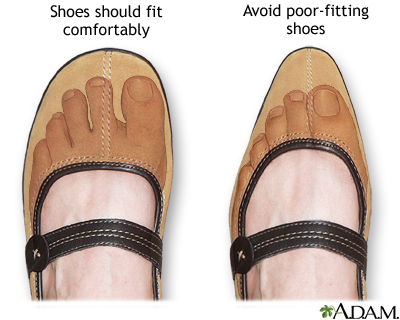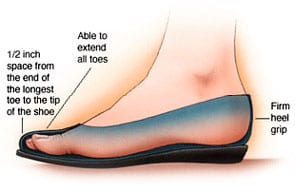Understanding Shoe Fit
Shoe fit is essential for comfort and foot health. Wearing shoes that don’t fit correctly can lead to a range of issues, from blisters and calluses to more severe conditions like bunions and plantar fasciitis.
The Importance of Proper Shoe Fit
Proper shoe fit isn’t just about comfort; it’s about overall health. The wrong fit can strain your feet and affect your posture. According to a study published in the Journal of Foot and Ankle Research, 72% of participants reported foot pain due to wearing shoes that were either too tight or too loose. [Journal of Foot and Ankle Research]
What Happens When Shoes Don’t Fit?
When shoes are too tight, they can cause discomfort, while shoes that are too loose can lead to your feet sliding around, leading to blistering. The American Podiatric Medical Association states that proper shoe fit contributes to better alignment and overall foot health.
How to Determine Your Shoe Size
Finding the right shoe size can be quite challenging, especially since sizes can vary between brands and styles. Here’s a guide to help you measure your feet at home.
Measuring Your Feet
To measure your feet, follow these steps:
- Place a piece of paper on the floor against a wall.
- Stand on the paper with your heel against the wall.
- Mark the tip of your longest toe on the paper.
- Measure the distance from the wall to your mark.
- Repeat for the other foot, as one foot is often larger than the other.

Using a Shoe Size Chart
Once you have your measurements, refer to a shoe size chart to find your size. Many brands provide their own charts, as sizing can differ. For example, a size 9 in one brand might be a 9.5 in another. Visit Nike or Adidas for their specific size charts.
The Anatomy of a Well-Fitting Shoe
A well-fitting shoe takes into account various anatomical features, providing both comfort and support. Here’s what to look out for:

Toe Box
The toe box should have enough room for your toes to move freely. A good rule of thumb is to have about a thumb’s width between your longest toe and the end of the shoe. This prevents your toes from cramping, especially when walking or running.
Arch Support
Arch support is crucial for maintaining the natural curvature of your foot. Shoes that offer good arch support can help alleviate tension and reduce the risk of injuries. Consider getting custom orthotics if you have high or low arches.

Heel Fit
Your heel should fit snugly within the shoe without slipping. A loose heel can cause blisters and lead to instability. Look for shoes with a firm heel counter to provide extra support.
Common Shoe Fit Issues
Even when you think you’ve found the right size, various fit issues can still arise. Here’s a look at some common problems and solutions.

Blisters
Blisters can form from friction, often caused by shoes that are either too tight or too loose. To prevent blisters, ensure your shoes fit snugly without pinching.
Flat Feet and High Arches
People with flat feet might require shoes with extra cushioning and motion control, while those with high arches need shoes with good arch support and stability. Consulting with a podiatrist can provide personalized recommendations.

Finding the Right Shoes for Your Foot Type
Different foot types need different types of shoes. Here’s a comparison table of recommended shoe types based on foot shape.
| Foot Type | Recommended Shoe Type |
|---|---|
| Flat Feet | Stability shoes with arch support. |
| High Arches | Cushioned shoes for impact absorption. |
| Neutral Arches | Any shoe type but ensure it provides comfort. |

Real-World Experiences: How Fit Affects Performance
Many athletes have noted the crucial role shoe fit plays in their performance. For instance, Olympic runner Allyson Felix shared how switching to properly fitted shoes transformed her performance. In a discussion with a sports magazine, she emphasized the importance of comfort in avoiding injuries.
Case Study: Running Shoe Fit
A case study conducted at the National Institutes of Health revealed that runners who wore shoes that were 1-2 sizes larger than their measured size experienced fewer injuries over a six-month period. This highlights the significance of allowing adequate room for swelling during runs.

Crossover to Casual Footwear
Even for casual wear, fit matters. Many individuals find that a minor adjustment in shoe size can drastically enhance their daily comfort levels. For example, a woman reported that going half a size up in her everyday sneakers alleviated pressure points she didn’t even know existed!
Tips for Finding the Perfect Fit
Here are some practical tips to ensure you find the ideal fit every time you shop for shoes:

Shop at the Right Time
Feet can swell throughout the day; hence, it’s ideal to shop for shoes in the afternoon or evening when your feet are at their largest.
Wear the Right Socks
When trying on shoes, wear the type of socks you plan to use regularly. Thicker socks might require a larger shoe size.
Walk Around
Always walk around the store when trying on shoes. This will provide a better sense of how they feel during movement. Don’t hesitate to jog if you’re buying running shoes!
Check for Return Policies
It’s always wise to check the return policy before you buy. Many places allow you to try on shoes at home, giving you the comfort of ensuring your shoes fit perfectly in your usual environment.
Product Highlight: Best Shoe Brands for Fit
Here’s a quick look at some of the best brands known for their shoe fit and comfort:
New Balance
New Balance offers a wide range of sizes and widths, making them a go-to for many with unique foot shapes.
Asics
Known for their excellent arch support and cushioning, Asics provides a comfortable fit for runners.
Clarks
For casual wear, Clarks is reputed for their comfortable loafers and boots that fit well without sacrificing style.
Pros and Cons of Different Shoe Fits
Understanding the advantages and disadvantages of various shoe fits can help you make informed decisions.
Snug Fit
- Pros: Better stability and control.
- Cons: Can lead to discomfort and blisters if too tight.
Loose Fit
- Pros: Provides comfort and allows for movement.
- Cons: Increases the risk of blisters and lack of support.
FAQs About Shoe Fit
1. How do I know if my shoes fit properly?
Your shoes should have a snug fit without causing pressure points. You should be able to wiggle your toes and feel secure in the heel.
2. Should I try shoes on with socks?
Yes, always wear the type of socks you plan to use regularly to ensure the best fit.
3. What is the best time to buy shoes?
The afternoon or evening is the best time, as your feet tend to swell slightly during the day.
4. Can shoe fit affect my posture?
Absolutely! A proper fit helps align your body and maintains better posture.
5. What should I do if I have one foot larger than the other?
Buy shoes that fit the larger foot, or consider brands that offer half sizes and various widths.
6. How often should I measure my feet?
It’s suggested to measure your feet once a year, or whenever you notice discomfort in your shoes.
7. Are expensive shoes worth it for fit?
Quality often reflects in comfort and fit. Invest in shoes that provide good support and are aligned with your foot type.
8. Should I break in new shoes?
New shoes should feel comfortable right away. If you’re experiencing discomfort, you might need a different size or style.
9. What if my shoes are too tight?
Consider sizing up, or trying a different model. You can also use shoe stretchers for minor adjustments.
10. Can I return shoes if they don’t fit?
Most retailers have return policies that allow you to return or exchange shoes that aren’t fitting properly, so always check before you buy.